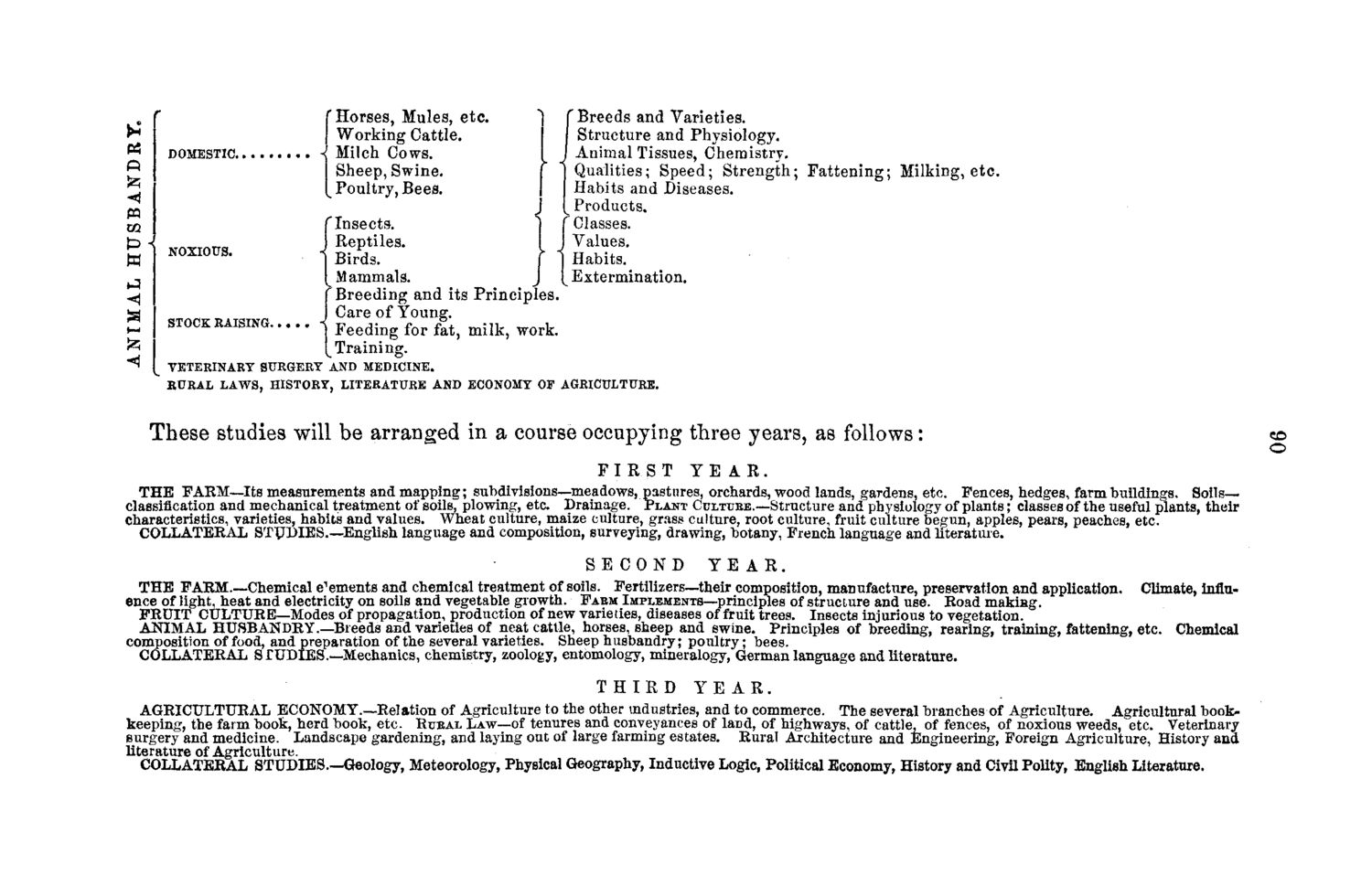| |
| |
Caption: Board of Trustees Minutes - 1868
This is a reduced-resolution page image for fast online browsing.

EXTRACTED TEXT FROM PAGE:
<• 'Horses, Mules, etc. Working Cattle. Milch Cows. Sheep, Swine. Poultry, Bees. 32 NOXIOUS. fc -< f Breeds and Varieties. Structure and Physiology. Animal Tissues, Chemistry. v - Qualities; Speed; Strength; Fattening; Milking, etc Habits and Diseases. Products. 'Insects. f Classes. J Values. Reptiles. 1 Habits. Birds. Mammals. J 1 Extermination. 'Breeding and its Principles. Care of Young. Feeding for fat, milk, work. Training. TMAL VETERINARY SURGERY AND MEDICINE. RURAL LAWS, HISTORY, LITERATURE AND ECONOMY OP AGRICULTURE. These studies will be arranged in a course occupying three years, as follows: F I R S T YEAR. THE FARM—Its measurements and mapping; subdivisions—meadows, pastures, orchards, wood lands, gardens, etc. Fences, hedges, farm buildings. S o i l s classification and mechanical treatment of soils, plowing, etc. Drainage. PLANT CULTUBE.—Structure and physiology of plants; classes of the useful plants, their characteristics, varieties, habits and values. Wheat culture, maize culture, grass culture, root culture, fruit culture begun, apples, pears, peaches, etc. COLLATERAL STUDIES.—English language and composition, surveying, drawing, botany, French language and literature. SECOND YE AR. THE FARM.—Chemical elements and chemical treatment of soils. Fertilizers—their composition, manufacture, preservation and application. Climate, influence of light, heat and electricity on soils and vegetable growth. FARM IMPLEMENTS—principles of structure and use. Road making. FRUIT CULTURE—Modes of propagation, production of new varieties, diseases of fruit trees. Insects injurious to vegetation. ANIMAL HUSBANDRY.—Breeds and varieties of neat cattle, horses, sheep and swine. Principles of breeding, rearing, training, fattening, etc. Chemical composition of food, and preparation of the several varieties. Sheep husbandry; poultry; bees. COLLATERAL STUDIES.—Mechanics, chemistry, zoology, entomology, mineralogy, German language and literature. THIRD YEAR. AGRICULTURAL ECONOMY.—Relation of Agriculture to the other industries, and to commerce. The several branches of Agriculture. Agricultural bookkeeping, the farm book, herd book, etc. RUBAL LAW—of tenures and conveyances of laud, of highways, of cattle, of fences, of noxious weeds, etc. Veterinary surgery and medicine. Landscape gardening, and laying out of large farming estates. Rural Architecture and Engineering, Foreign Agriculture, History and literature of Agriculture. COLLATERAL STUDIES.—Geology, Meteorology, Physical Geography, Inductive Logic, Political Economy, History and Civil Polity, English Literature. O
| |